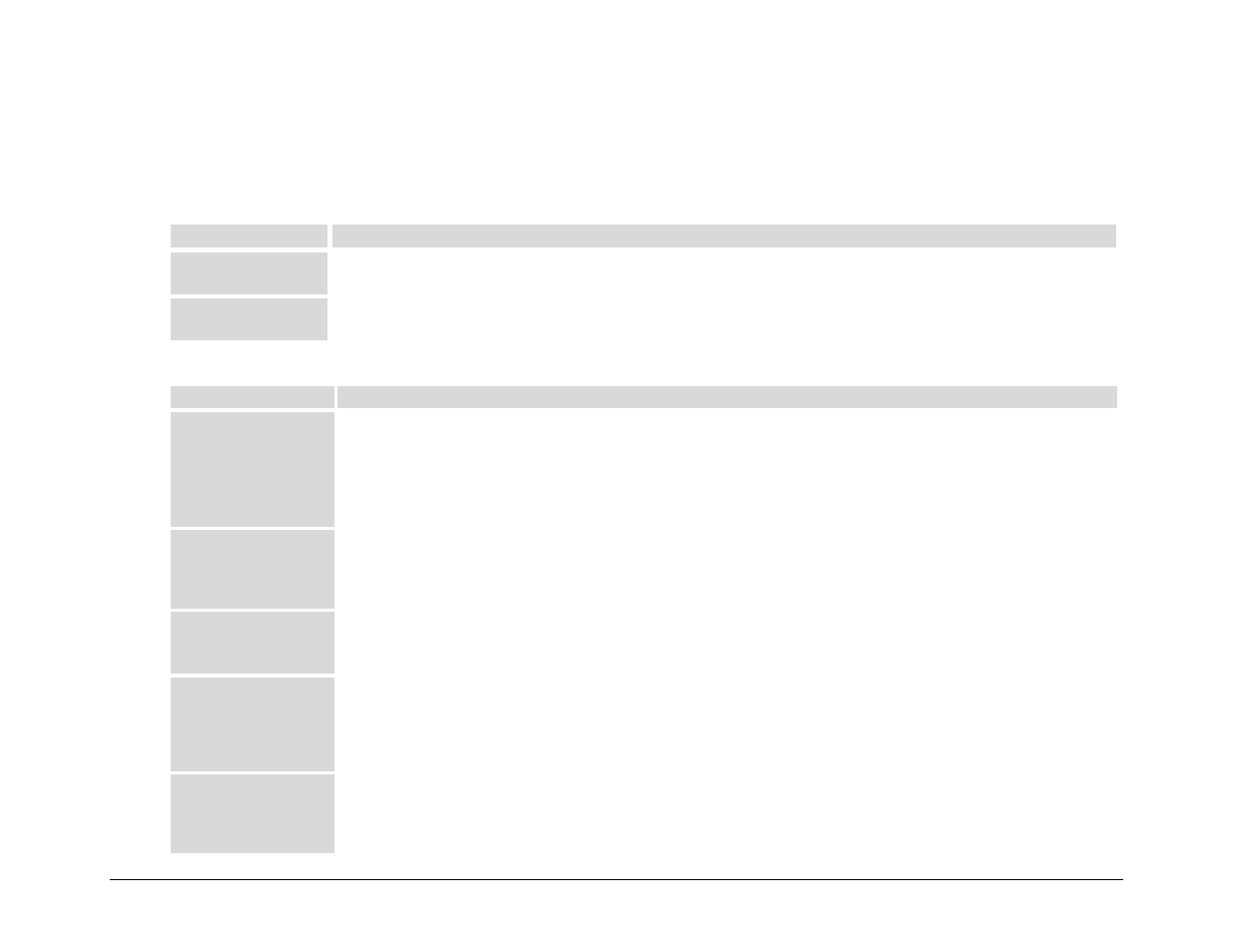B.5.5 instruction code qualifier – Comtech EF Data PCB-4300 User Manual
Page 83

PCB-4300 1:2 Phase Combiner
Revision
2
Appendix B
MN/PCB4300.IOM
B–5
B.5.5 Instruction Code Qualifier
This is a single character, which further qualifies the preceding instruction code. Code Qualifiers obey the following rules:
1. From Controller-to-Target, the only permitted values are:
Symbol
Definition
=
(ASCII code 61)
‘=’ is used as the assignment operator, and is used to indicate that the parameter defined by the preceding byte should be
set to the value of the argument(s) that follow it. For example: MUT=1 would mean 'enable the Mute function.'
?
(ASCII code 63)
‘?’ is used as the query operator, and is used to indicate that the Target should return the current value of the parameter
defined by the preceding byte. For example: MUT? Would mean ‘return the current state of the Mute function.’
2. From Target-to-Controller, the only permitted values are:
Symbol
Definition
=
(ASCII code 61)
The = code is used in two ways:
First, if the Controller has sent a query code to a Target (for example: MUT? would mean ‘return the current state of the
Mute function’), the Target would then respond with MUT=x, where ‘x’ represents the state in question (1 being ‘enabled’,
2 being ‘disabled).
Second, if the Controller sends an instruction to set a parameter to a particular value, then, providing the value sent in the
argument is valid, the Target will acknowledge the message by replying with MUT= (with no message arguments).
?
(ASCII code 63)
The ? code is only used as follows:
If the Controller sends an instruction to set a parameter to a particular value, then, if the value sent in the argument is not
valid, the Target will acknowledge the message by replying (for example) with MUT? (with no message arguments). This
indicates that there was an error in the argument of the message sent by the Controller.
!
(ASCII code 33)
The ! code is only used as follows:
If the Controller sends an instruction code that the Target does not recognize, the Target will acknowledge the message by
echoing the invalid instruction, followed by the ! character; for example, XYZ!
*
(ASCII code 42)
The * code is only used as follows:
If the Controller sends an instruction to set a parameter to a particular value, then, if the value sent in the argument is valid,
but the target is in the wrong mode (e.g., Standby mode in Redundancy configuration) such that it will not permit that
particular parameter to be changed at that time, the Target will acknowledge the message by replying (for example) with
MUT* (with no message arguments).
#
ASCI code 35)
The # code is only used as follows:
If the controller sends an instruction code that the target cannot currently perform because of hardware resource issues,
then the target will acknowledge the message by echoing the invalid instruction, followed by the # character; for example,
MUT# (with no message arguments).
